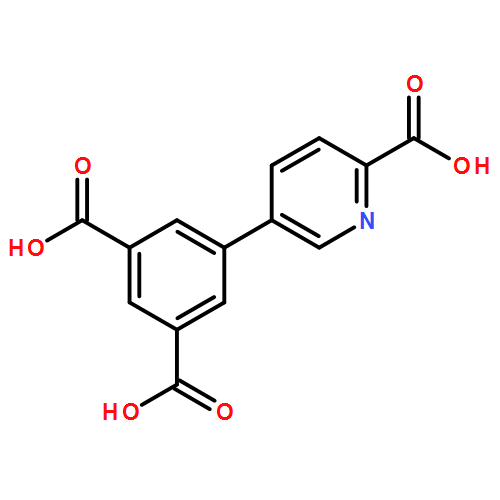Co-reporter: Jinzhong Gu, Yanhui Cui, Xiaoxiao Liang, Jiang Wu, Dongyu Lv, and Alexander M. Kirillov
pp: 4658-4670
Publication Date(Web):July 5, 2016
DOI: 10.1021/acs.cgd.6b00735
5-(6-Carboxypyridin-3-yl)isophthalic acid (H3L) was utilized as an almost unexplored multifunctional ligand to construct, under hydrothermal conditions, ten new coordination compounds, namely, [Cd(μ2-H2L)2]n (1), [Ni(HL)(H2biim)2] (2), [Mn(μ2-HL) (phen)(H2O)]2·2H2O (3), {[Mn3(μ4-L)2(H2O)6]·3H2O}n (4), {[Co3(μ5-L)2(H2O)6]·2H2O}n (5), {[Ni3(μ4-L)2(H2O)6]·2H2O}n (6), {[Zn3(μ5-L)2(H2O)4]·2H2O}n (7), {[Mn3(μ5-L)2(H2O)6]·4H2O}n (8), {[Co3(μ4-L)2(μ2-4,4′-bipy)(H2O)6]·2H2O}n (9), and {[Ni3(μ5-L)2(H2O)6]·2H2O}n (10), also using an optional auxiliary ligand selected from 2,2′-biimidazole (H2biim), 1,10-phenanthroline (phen), or 4,4′-bipyridine (4,4′-bipy). The obtained compounds 1–10 were analyzed by IR spectroscopy, thermogravimetric and elemental analysis, and single-crystal and powder X-ray diffraction. The structures of the products vary from 3D MOFs (metal–organic frameworks 5 and 7–10) to 2D CPs (coordination polymers 1, 4, and 6) as well as to a discrete 0D monomer 2 and a dimer 3. The latter two are extended by multiple hydrogen bonds into complex 3D supramolecular networks. This structural difference in 1–10 is directed by the kind of metal(II) center, the deprotonation degree of the principal H3L building block, and/or the kind of auxiliary ligand. Notably, an addition of 4,4′-bipy can tune the structures of MOFs 8–10 by the coordination or template effect. Topological classification of metal–organic and H-bonded underlying networks was performed, disclosing a variety of topological nets: sql (in 1), 3,10T3 (in 3), 3,4L83 (in 4 and 6), tcs (in 5, 8, and 10), 3,4,5T95 (in 7), and sra (in 9), as well as a topologically unique network in 2. The magnetic properties (for compounds 3–6, 8–10) and luminescent properties (for compounds 1, 7) were also investigated and discussed. In fact, compound 7 exhibits an intense violet emission in the solid state. Measurements of the magnetic susceptibility indicate interactions of an antiferromagnetic nature between the adjacent metal(II) centers in the compounds 3–6 and 8–10. The obtained products represent the first series of metal–organic compounds assembled from the H3L precursor, thus opening up its application as a new pyridine–tricarboxylate organic block for designing CPs or MOFs.
